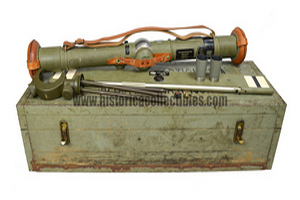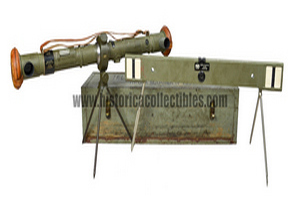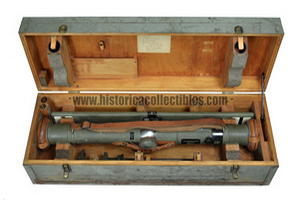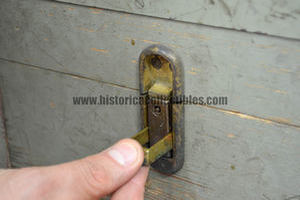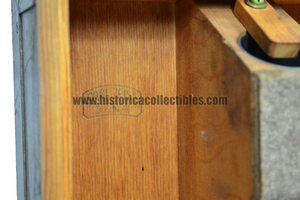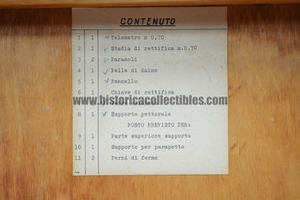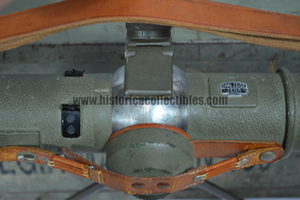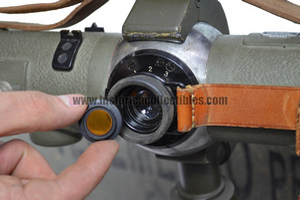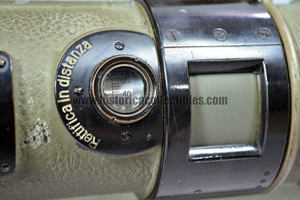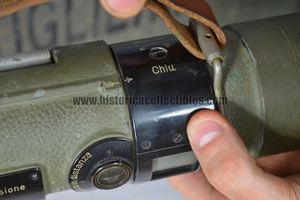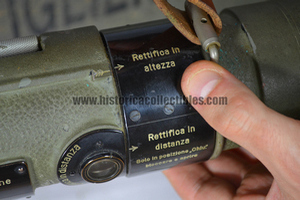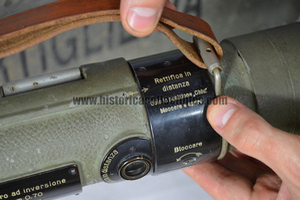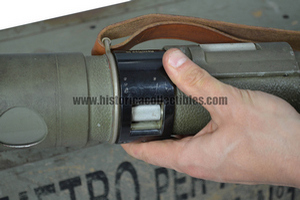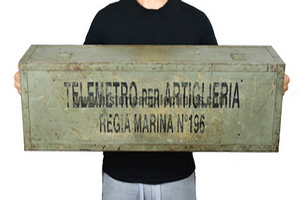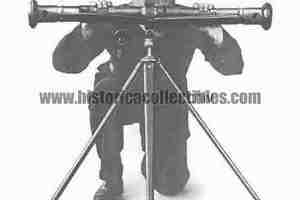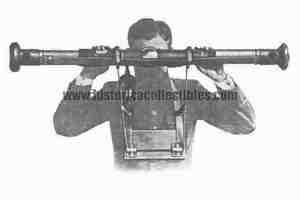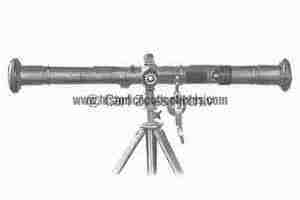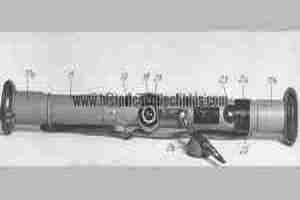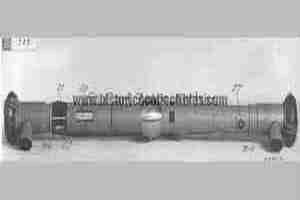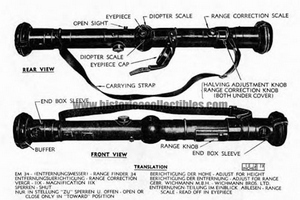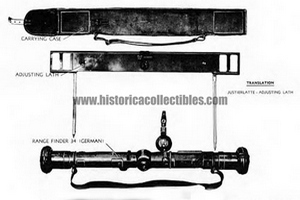Invert-Telemeter 11x, Carl Zeiss Basis 0,70 m, Italian Royal Navy, 1939
Invert-Rangefinder Mod. Em 34, manufactured by Carl Zeiss Jena for the Italian Royal Navy, in about 1939. This optical device, with 11x magnifications, is small and lightweight. Its 70 cm base makes it very easy to handle. Distance measurements, ranging from 200 to 10000 meters, are detectable by the image reversal method and made visible through a small window. The only ocular present can be adjusted according to diopters: a colored glass, to be applied to the eyepiece, is used as a damping device. Its wooden carrying case, where it is housed inside, is the original staircase with integrated extensible tripod designed to test and fine-tune the rangefinder operation with extreme precision. The length of the device is 0.85 m, the diameter of the outer tube 63 mm, the weight is 4.8 kg.
It is certainly to be considered a rare specimen produced by Carl Zeiss Jena for the Italian Navy, as similar telemeters were also built in Italy by companies such as the Galileo Offices in Florence, San Giorgio of Genova, La Filotecnica Salmoiraghi of Milano and the Officine Meccaniche di Precisione of Roma.
Excellent condition and perfect working.
Carl Zeiss takes its name from its founder, Carl Zeiss, who on November 17, 1846 chose the small town of Jena, in Thuringia, as the location for his precision optical equipment factory.
Thanks to the severe quality control that Carl Zeiss imposed on his products, going so far as to personally destroy the microscopes that did not pass the tests, the newly formed Zeiss became the official supplier of the University of Jena and received the gold medal of the industrial exhibition in 1861 of Thuringia as the best research instrument produced in Germany, awarded to the Stand I microscope of 1857.
In 1866 the thousandth microscope was produced and the name Zeiss became known in all European scientific circles. Thanks to studies on the Porro prism, in 1893 Abbe patented double prism binoculars, which accentuated the perception of depth.
The mass production of Zeiss binoculars began in 1894, already at the beginning of the twentieth century more than 30,000 were made, at the beginning of the First World War the quota had risen to 500,000 and, at the end of the Second World War, as many as 2,260,000 were produced binoculars for the civil and military market. Models were made starting from 4x11 mm to 12x40 mm, up to real giants such as the 80 mm and 100 mm.
Thanks to studies conducted on the perception of light in low light situations, it was demonstrated that the average dilation of the pupil in an adult is approximately 7 mm. For this reason, the 7x50 mm model was introduced in 1910 and remained on the market until 1917 with few changes to the materials used.
In 1926, following the post-war crisis of the First World War with the Treaty of Versailles which bankrupted many important German companies, Zeiss purchased "C.P. GOERZ" and founded Zeiss Ikon in 1926.
In 1937 Zeiss had commercial contacts and factories in more than 29 countries around the world. From '33 Zeiss acquired interest from the Nazi regime, which balanced production towards military instruments.
It successfully produced binoculars with wide-angle optics for military use, pressure-resistant optical systems for U-boats, periscope binoculars for targeting tanks. Furthermore, Zeiss cameras were mounted on the V2s for remote sensing operations of the English coasts.
On 1 November 1935, Zeiss, in the figure of Alexander Smakula, patented a process for the treatment of optical glass with extraordinary results in terms of light transmission. Remained a military secret until 1939, it was adopted on binoculars to reduce ghost images and internal reflections.
During the Second World War, there were numerous bombings against the Zeiss factories. Jena was bombed several times by the Allies starting in 1944. Stuttgart was razed to the ground, although the Contessa-Nettel factory suffered little damage. The bombing of Dresden, in addition to devastating the city, also caused considerable damage to the Zeiss Ikon headquarters.
On April 13, 1945, American military forces entered Jena, surprising themselves that the bombing had not caused any significant damage. The main planetarium was in ruins, while the factories remained operational.

